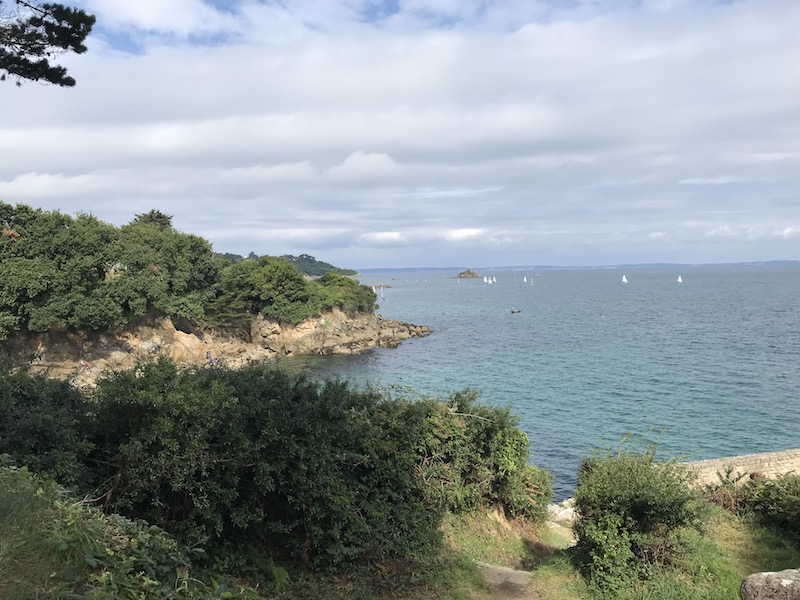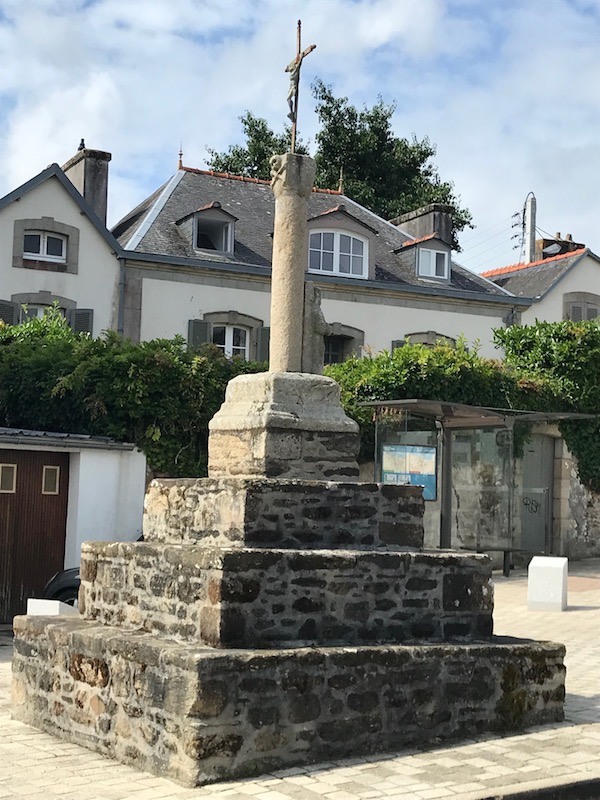Our Blog - Bretagne Trip - Summer 2021 - Day 2
We actually thought the town of Douarnenez would be okay, but .. well ... it really wasn't much. The tourist office gave us a walking tour but, I have to admit that the part of the town that they took us through was just ugly. Perhaps it was because they were trying to take us through the history of the town, which was built around the sardine fishing industry. In the 18th century, sardines were the driving force in the economy, with huge fishing and canning activities at the port up until the early 20th century. But the walk along the port area was pretty bleak and so we abandoned the tour and headed to the other side of the estuary. Here you can see the water with the town of Tréboul to the left and the island if Tristan to the right.

The island of Tristan can be reached by foot at low tide. It is linked to the legend of Tristan and Isolde, from the times of King Arthur. The story varies based on who the author is, but in general, it is a love triangle between Tristan, the fair Irish maiden Isolde, and King Mark of Cornwall. There was a priory on the island during the middle ages but it is now uninhabited and part of a marine park established in 2007.

Tréboul, situated on the other side of the estuary, is a much nicer little town. It has a harbor for pleasure boats and an area where people can learn how to sail. The shore is lined with cafés and crèperies. We walked on a little path around the cliffs just to a large sandy beached called Les Sables Blancs (the white sands). On the way back to town, we passed a calvary, which is a type of monumental public crucifix commonly found across northern France. We ended up seeing lots of these, some just alongside the road.



A bit further down the coast, I attempted to find another walk that we could do with Lucy. Unfortunately, it was a bit too rocky to really do much walking there. But the views from where we ended up were quite amazing.






Our next stop was the town of Pont-Croix, which we had noticed was a finalist for a yearly contest for "the village the most preferred by the French". There is also a HUGE amount of history on the town in the French Wikipedia page. Unfortunately, this was (again) a very disappointing stop along the way. The town population keeps dropping and maybe it was because it was a Monday, but there was almost nothing open in the entire town.
We parked and headed towards the center of town. We pasted by the Saint-Vincent de Pont-Croix chapel, which was the chapel of a seminary that closed in 1974. It is Neo-Romanesque in style and entirely built out of granite starting in 1902. We couldn't go inside and it looked like part of the buildings around the chapel were being converted into apartments.


The main church is the Notre-Dame de Roscudon Church. It is a late-Romanesque style church from the 13th-14th centuries. It needed a good cleaning but you can see some wonderful architectural features over the entrance door. The spire inspired various bell towers in the surrounding area and served as a model for the construction of the spire of the Quimper cathedral between 1854 and 1856.




Inside, the nave is lined by Romanesque arches, separating it from the aisles on each side.

This is a large carved wooden altarpiece dedicated to Saint Nicholas, done in the 17th century.

The ceiling was painted wood, resembling the round bottom of a boat. This paneled vault was in the right-side of the transept.

Some of the stained glass is quite old, dating back to the 15th century, but in some cases, they have been grouped together into a single window since not much of it is left. The main part of this window is called the Childhood of Christ and most of the stained glass dates to around 1540. The tympanum at the top is all abstract glass from a restoration in 1991.

This is one of the more modern windows, entitled "The Coronation of the Virgin", done in 1884.

There was not much else in the town ... a couple of stores and antique shops.